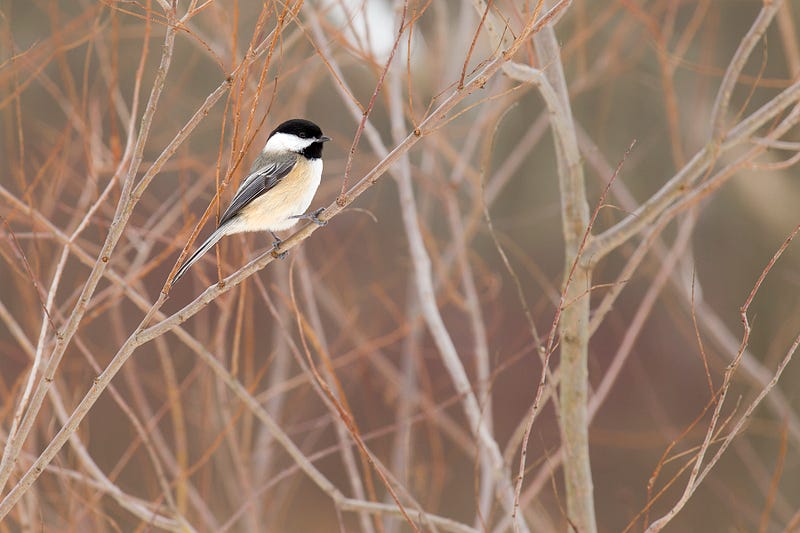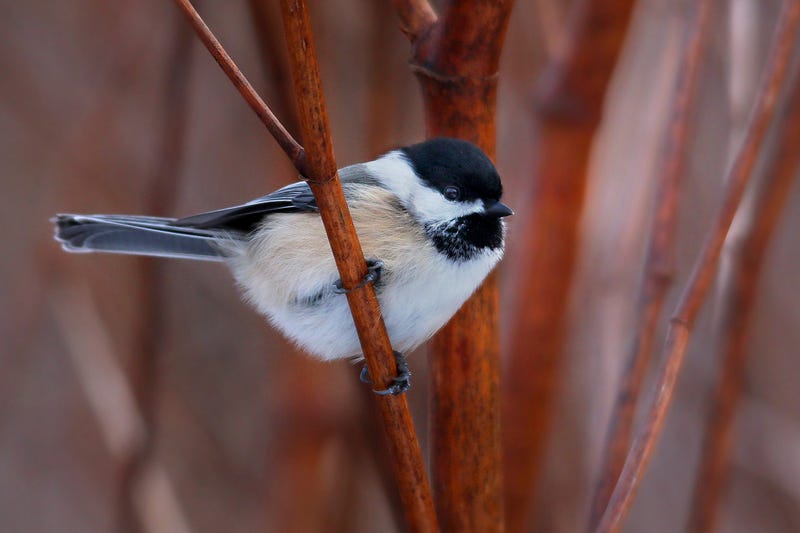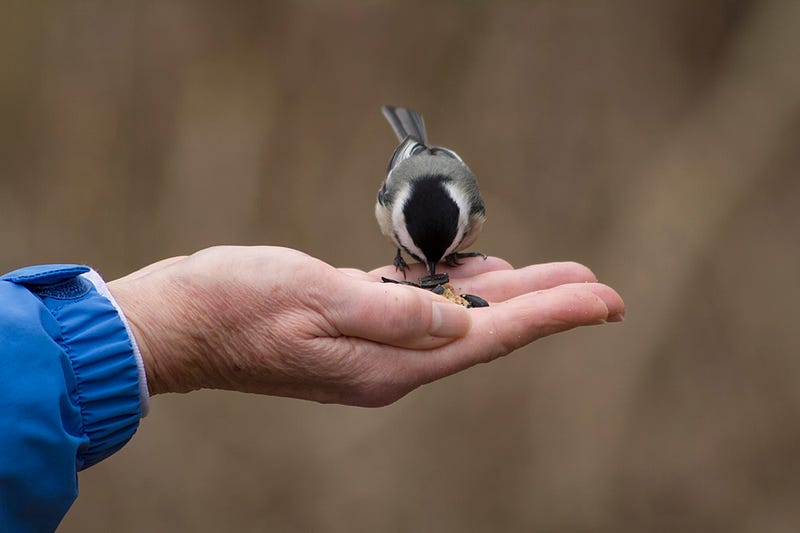
Janean Kazimir, Interpretive Naturalist
How do black-capped chickadees survive frigid Northeast Ohio winters? Despite their seemingly fragile appearance, these year-round residents are experts at outwitting the cold.
Unlike mammals that keep warm in winter with extra layers of fur and fat, chickadees are incapable of growing excess feathers or storing large amounts of body fat, and extra weight would greatly affect their ability to fly. So chickadees consume up to 60% of their body weight daily to maintain their 100°F body temperature.

BIRD BRAINS
Chickadees are unique in the animal kingdom — they are one of the only creatures that can grow brain cells after reaching maturity. This ability allows chickadees to create extra memories of where their winter food stashes are hidden. They can remember hundreds, even thousands, of distinct hiding places. In spring, when food is naturally abundant, chickadees lose this extra brain mass, only to regrow it the following winter season. Researchers are studying the brains of chickadees in hopes of finding better treatments for medical patients who have suffered neural damage from strokes and even Alzheimer’s disease.

TRY THIS!
Want to have a close and personal encounter with these extraordinary birds? Wild chickadees at F.A. Seiberling Nature Realm (1828 Smith Rd., Akron) are so accustomed to people that they will voluntarily land on the hands of park visitors offering them seeds.
To learn more about black-capped chickadees, winter bird feeding and more, call 330–865–8065 or visit our centers at F.A. Seiberling Nature Realm in Akron and Liberty Park in Twinsburg.